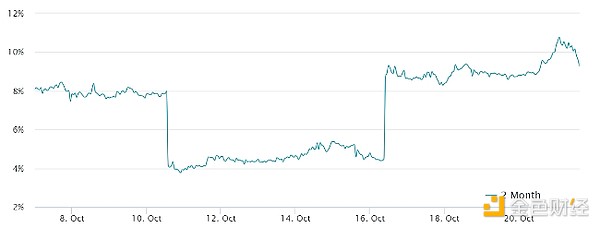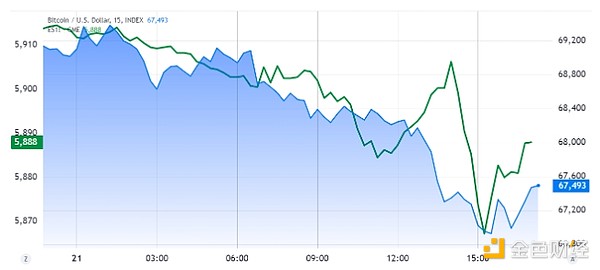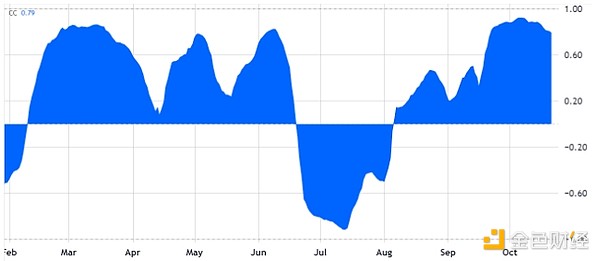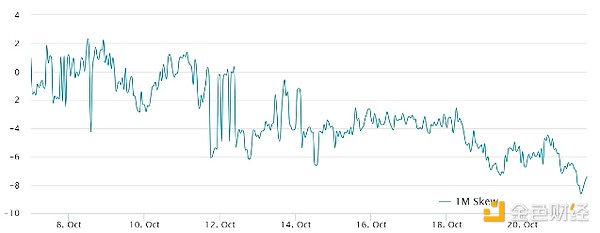Author: Marcel Pechman, CoinTelegraph; Compiled by: Tong Deng, Jinse Finance
On October 21, the price of Bitcoin fell to $67,000, erasing the gains of the previous three days. Some analysts say that one reason for the pullback is that investors have reduced their exposure to Bitcoin due to concerns about the impact on traditional markets. However, indicators for Bitcoin derivatives remain very stable.
Although there are concerns that many economies may lose momentum or confidence in the government's ability to refinance debt, the demand for Bitcoin derivatives as a hedging tool remains stable. If whales or arbitrageurs expect further declines, these indicators will reflect greater volatility.
No signs of bearish bets in Bitcoin futures
In a neutral market, the Bitcoin futures premium is usually between 5% and 10%, and was only slightly affected on October 21. The monthly increase in BTC futures prices reflects the extended settlement cycle, and a premium above 10% indicates a bullish sentiment.

Bitcoin 2-month futures annualized premium. Source: laevitas.ch
The annualized premium (basis rate) in October remained above 9%. On the 21st, Bitcoin retested the $67,000 support level. However, before drawing a conclusion, it is important to confirm whether this sentiment is limited to the Bitcoin futures market. Based on the price chart alone, Bitcoin's price movement seems to reflect the intraday performance of the stock market.

S&P 500 futures (green) and S&P 500 futures (green) Bitcoin/USD (blue). Source: TradingView
T. Rowe Price's fixed income chief Arif Husain told Bloomberg that driven by rising inflation expectations and concerns about government fiscal spending, the yield on the 10-year U.S. Treasury bond "will test the 5% threshold within the next six months." As investors sell bonds, yields rise, indicating traders are seeking higher returns.
Husain pointed out that the government will "issue a large amount of new debt" to the market, while the Federal Reserve is trying to shrink its balance sheet to curb inflation and prevent the economy from overheating. The annual cost of U.S. debt interest has exceeded $1 trillion, prompting the central bank to consider lowering interest rates.
Bitcoin price has not yet decoupled from stocks
In the uncertain macroeconomic environment, fear, uncertainty and doubt (FUD) have greatly influenced the price trend of Bitcoin.
Although Bitcoin is often considered uncorrelated with the traditional market (having shown periods of complete decoupling from the S&P 500 index), the 40-day correlation has remained above 80% over the past month, indicating that the two asset classes are closely related.

Bitcoin 40-day correlation with S&P 500 index futures. Source: TradingView
In contrast to the negative or negligible correlation between Bitcoin and the S&P 500 index from mid-July to mid-September, recent data shows that the two markets are being driven by similar factors. The increasing correlation between Bitcoin and gold, which exceeded 80% on October 3, further supports this hypothesis.
The Bitcoin options market also reinforces the argument of derivative resilience. The 25% Delta skew indicator shows that put (sell) options are trading at a discount compared to equivalent call (buy) options.

Bitcoin 1-month put-call skew, put options. Source: Laevitas.ch
Generally, a deviation between -7% and +7% is considered neutral, and the current indicator is on the border of neutral to bullish market.
In summary, derivative traders have not panicked in response to Bitcoin's recent price decline. If traders expect further price declines, the skew would shift towards zero or higher. Overall, Bitcoin derivatives continue to show resilience.






